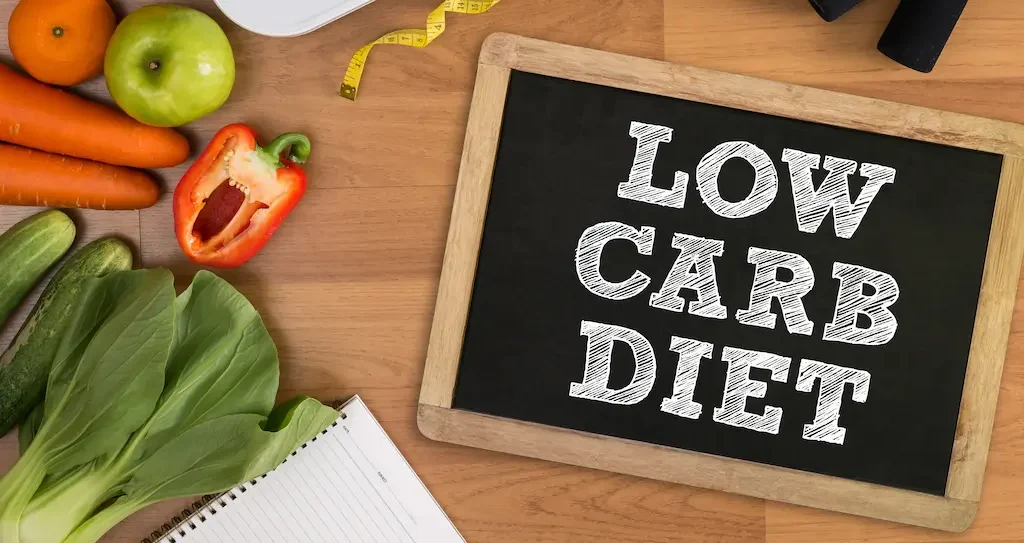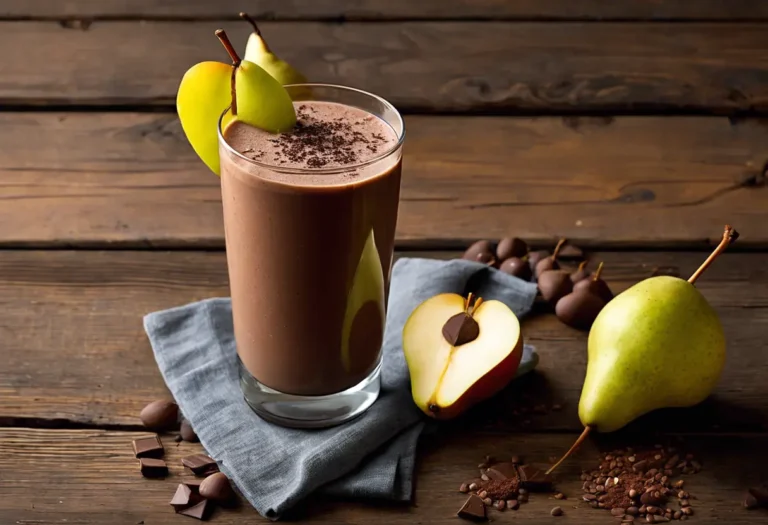Type 1 diabetes is an autoimmune disease that makes the pancreas stop producing insulin. Insulin is a hormone that helps sugar enter cells and produce energy. A low-carb diet is one of the most effective lifestyle approaches for managing type 1 diabetes. By reducing carbohydrate intake, blood sugar levels can be better controlled. This article provides a comprehensive guide to using a T1D Low-Carb Diet.
What is Type 1 Diabetes?
Type 1 diabetes is an autoimmune disorder that attacks and destroys insulin-producing cells in the pancreas. This leaves the body unable to produce enough insulin, the hormone needed to regulate blood sugar levels.
With type 1 diabetes, blood sugar levels can go dangerously high or low without insulin treatment. Type 1 diabetes cannot be prevented or cured, and it requires lifelong insulin injections or an insulin pump to survive.
Type 1 diabetes usually develops in childhood or young adulthood but can occur at any age. The exact causes are unknown but involve a combination of genetic and environmental factors. People with type 1 diabetes need insulin, diet, and lifestyle changes to keep their blood sugar levels healthy and avoid complications.
How Does a Low-Carb Diet Help Manage T1D?
A low-carb diet is one of the best dietary approaches for managing type 1 diabetes. By reducing overall carbohydrate intake, it helps keep blood sugar levels more stable and predictable. This makes matching insulin doses easier and reduces the risk of blood sugar fluctuations.
Some key benefits of a low-carb diet for T1D include:
- Lower post-meal blood sugar spikes – With less carbs consumed, there are smaller spikes in blood glucose after meals. This reduces the need for large bolus insulin doses.
- Less insulin required – Lower carb intake leads to needing less mealtime and overall daily insulin. This lowers the risks of hypos.
- Improved insulin sensitivity – Low-carb diets can help cells use insulin better, which improves metabolic health.
- Weight loss – Lower carb intake often leads to reduced calorie intake and weight loss. Excess weight exacerbates insulin resistance.
- Reduced blood sugar variability – With less carbs, blood sugar levels stay more stable and predictable each day.
What Foods to Eat on a T1D Low-Carb Diet?
On a low-carb diet with type 1 diabetes, eat high-protein foods, healthy fats, and non-starchy vegetables. Here are the main categories of low-carb foods to emphasize:
Proteins
- Meat – Beef, pork, lamb, chicken, turkey, etc.
- Fish – Salmon, tuna, trout, mackerel, sardines, etc.
- Eggs
- Full-fat Dairy – Cheese, plain yogurt, heavy cream
- Tofu and tempeh
Fats
- Oils – Olive oil, avocado oil, coconut oil
- Butter and ghee
- Nuts and nut butters
- Seeds
- Avocados
- Full-fat dairy
Non-Starchy Vegetables
- Leafy greens – Spinach, kale, lettuce
- Cruciferous veggies – Broccoli, cauliflower, Brussels sprouts
- Asparagus, zucchini, cucumber, mushrooms, peppers, etc.
Other Low-Carb Foods
- Berries in moderation
- 90%+ dark chocolate
- Herbs, spices, lemon/lime juice, vinegar, mustard, etc. for flavor
When grocery shopping, stick to the outer aisles of the store where the whole foods like produce and proteins are located. Avoid processed and packaged foods which tend to be higher in carbs.
Foods to Limit on a Low-Carb Diet for T1D
To follow a low-carb diet, there are certain high-carb foods that need to be limited or avoided:
- Grains – Bread, pasta, rice, cereal, etc.
- Starchy vegetables – Potatoes, sweet potatoes, corn, peas, winter squash, etc.
- Beans and legumes – Lentils, kidney beans, chickpeas, baked beans, etc.
- Fruits – Especially sweet fruits like bananas, grapes, mangos, etc. Lower sugar fruits like berries can be enjoyed in moderation.
- Sweets and desserts – Cookies, cakes, candy, ice cream, etc.
- Sugary drinks – Soda, juice, sweetened coffee/tea drinks, sports drinks, etc.
- Processed low-fat foods – These often contain added sugars to boost flavor.
- Condiments and sauces – Many are high in sugar content.
For best blood sugar control, try to avoid these high-carb foods as much as possible when following a T1D low-carb diet.
Sample 1-Day T1D Low-Carb Meal Plan
Here is an example of what a one-day low-carb meal plan may look like for someone with type 1 diabetes:
Breakfast
- 3 eggs scrambled with 1/4 cup cheddar cheese and salsa
- 1/2 avocado
- Coffee with heavy cream
Lunch
- Tuna salad made with olive oil mayo on a bed of spinach
- 1 oz. cheddar cheese
- 1 cup raspberries
Dinner
- 6oz grilled salmon
- 1 cup roasted Brussels sprouts tossed in olive oil
- Side salad with olive oil dressing
Snacks
- 1 oz. mixed nuts
- Turkey roll-ups (turkey slices rolled around mozzarella or cream cheese)
- Sugar-free jello with whipped cream
Drinks: Water, unsweetened tea, sparkling water
This provides a good balance of proteins, healthy fats, and low-carb veggies to keep blood sugar steady throughout the day.
Tracking Carbs for a T1D Low-Carb Diet
When starting a low-carb diet with type 1 diabetes, it’s important to track your carbohydrate intake. Here are some tips:
- Use a food tracking app to look up carb counts for the foods you eat. MyFitnessPal, Carb Manager, and Chronometer are good options.
- Read nutrition labels carefully, looking at total carbs and fiber. Net carbs = Total carbs – Fiber.
- For fresh foods, look up carb counts online or in low-carb food guides.
- Weigh or measure foods to understand accurate portion sizes. Estimating is often inaccurate.
- Keep a written food log tracking carbs and meals. This helps discover carb trends.
- Learn the carb counts of your frequent foods so you know your usual intake.
A good goal to start is around 30-50g net carbs per meal and 15-30g per snack. Adjust as needed based on your body’s response.
Transitioning to a T1D Low-Carb Diet
When transitioning to a low-carb diet from a standard diet, go slowly and make incremental changes. Here are some tips for an easier adjustment:
- Gradually reduce carbs over several weeks, rather than going very low carb immediately. This allows your body to adapt.
- Focus first on reducing sugar, grains, starchy veggies and fruit. Keep non-starchy veggies.
- Increase calories from proteins and healthy fats to replace carb calories. This helps manage hunger.
- Stay well hydrated by drinking plenty of water.
- Be vigilant with tracking blood sugars closely as you transition. Adjust insulin and food as needed.
- Handle carb cravings by planning for occasional higher carb meals/days.
With patience and monitoring, your body should adjust to relying less on carbs for energy.
Intermittent Fasting for T1D
Intermittent fasting (IF) is an eating pattern that cycles between periods of eating and fasting. It has emerged as an effective strategy to improve type 1 diabetes management when paired with a low-carb diet.
Potential benefits of IF for T1D:
- Lowers insulin needs and enhances insulin sensitivity
- Further stabilizes blood sugar variability
- Leads to weight loss and reduced insulin resistance
- Allows for flexible meal timing and larger meals when eating
Common IF approaches for T1D include:
- 16:8 IF – Fast for 16 hours (such as overnight), eat within an 8 hour window
- 5:2 IF – Fast two days a week, eat low carb the other five days
- 24-hour fasts – Once weekly or monthly
Precautions:
- Carefully monitor blood glucose and ketones and adjust insulin accordingly, especially when fasting.
- Increase electrolytes and water intake while fasting.
- Break fast if symptomatic of low blood sugars.
- Consult your healthcare provider before starting. IF may not be suitable for all.
Exercising with T1D on a Low-Carb Diet
Moderate exercise helps people with type 1 diabetes manage their blood sugar, weight, and health.
Here are some tips for safely exercising while following a low-carb diet:
- Check blood sugar before, during, and after exercise. Consume some quick carbs if trending low.
- Lower insulin doses before exercise, or disable insulin delivery on a pump.
- Carb up with an extra 15-30g carbs 1-2 hours pre-exercise if doing endurance activities.
- Eat a low-carb meal or snack after exercise, or reduce nighttime basal insulin.
- Adjust insulin doses and food intake as needed for 24-48 hours post-exercise as insulin sensitivity improves.
- Drink plenty of water and electrolytes like sodium and potassium.
- Have emergency glucose tabs on hand.
- Start slow and work up duration and intensity gradually.
T1D Low-Carb Diet Questions
Is keto good for type 1 diabetes?
A ketogenic diet keeping carbs very low, usually under 30g daily, can be effective for T1D but requires close medical supervision. It may improve blood sugar stability but can increase risk of ketoacidosis if insulin isn’t adjusted properly. Consult your healthcare provider before attempting keto.
How many carbs per meal should a type 1 diabetic eat?
A good starting point is around 30-50g net carbs per meal and 15-30g per snack. The best carb intake for you depends on many factors. Work with your doctor to find the right carb intake for you.
What foods spike blood sugar the most?
High GI foods like sugary sweets, fruit juices, white bread, and corn flakes can spike your blood sugar quickly. Focus on lower GI foods like non-starchy vegetables, nuts, beans, and whole grains.
Can I still eat fruit?
You can include some berries and lower glycemic fruits like stone fruits, grapefruit, kiwi, etc. in moderation. Avoid drinking fruit juices. Time fruit intake well with mealtime insulin doses.
What about diabetic-friendly packaged foods?
Many “diabetic friendly” snacks, desserts and products are still very high in carbs and processed. They may have added sugar alcohols too. It’s best to focus on whole, minimally processed low-carb foods.
Conclusion
Switching to a low-carb diet can significantly improve type 1 diabetes management. By reducing overall carbs and eating healthy proteins, fats and veggies, blood sugar stability improves. This allows for better insulin dosing and glycemic control. Combine carb tracking, exercise, and fasting with a well-formulated low-carb plan for optimal T1D health. Work closely with your healthcare team to find the best carb intake for you. With persistence, a low-carb lifestyle offers huge benefits for those living with type 1 diabetes.






